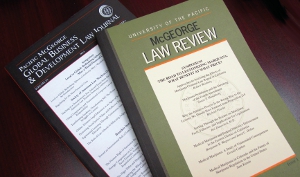Dangerous liaisons: The responsibility to protect and a reform of the U.N. Security Council
Document Type
Article
Publication Date
2016
Abstract
This Article responds to current literature, which unitarily advocates for a United Nations Security Council (UNSC) reform solution to the Responsibility to Protect (R2P) deadlock, particularly in the context of the situation in Syria. This Article argues, contra the consensus, that a reformed UNSC would hinder the crystallization of R2P as a customary norm and its application to humanitarian crises. Part I of this Article argues that the interaction between R2P and the newly advanced concept of Responsibility Not to Veto (RN2V) can be examined under two hypotheses: one substantive and one procedural. The substantive hypothesis treats RN2V as a corollary obligation to R2P, explicating that the concept of R2P necessitates two separate state obligations: (1) the obligation to respond to grave violations of human rights; and (2) the obligation to, at a minimum, refrain from obstructing other states' efforts to employ R2P. I argue that the substantive hypothesis, though not necessarily conceptually problematic, does not offer the same practical and pragmatic value that the procedural hypothesis does. By viewing RN2V as a procedural mechanism to facilitate R2P's invocation, R2P has a higher likelihood of being crystallized into a rule of customary international law. Part II of this Article analyzes empirical data to show that the often-proposed UNSC reform measure would be ineffective. I utilize the proposed models of UNSC expansion, advanced by the current academic literature, to examine the past and current practices of potential new permanent members toward the concepts of RN2V and R2P. By comparing this practice to that of the current permanent UNSC members, I conclude that the resulting UNSC composition would, in the aggregate, include more states that are not traditionally in favor of R2P. Despite hopes of a UNSC reform making the Council more effective in governing the use of force, this Article argues that in cases of R2P, a reformed UNSC is likely to face greater difficulty in reaching a consensus. Instead, the most effective way to promote the development of the R2P norm is through acknowledging RN2V's procedural role, and the assertion that RN2V functionally implements, or particularizes, R2P.
Publication Title
Columbia Journal of Transnational Law
ISSN
0010-1931
Volume
54
Issue
2
First Page
382
Last Page
423
Recommended Citation
Nadia Banteka,
Dangerous liaisons: The responsibility to protect and a reform of the U.N. Security Council,
54
Colum. J. Transnat’l L.
382
(2016).
Available at:
https://scholarlycommons.pacific.edu/facultyarticles/360



